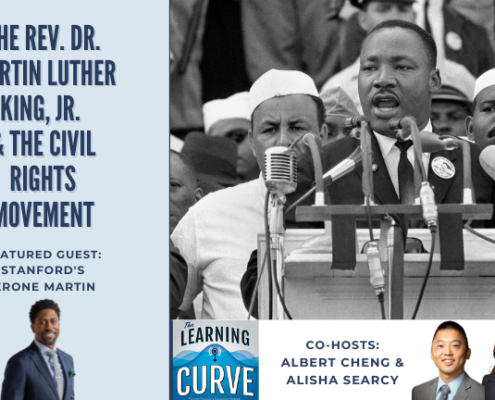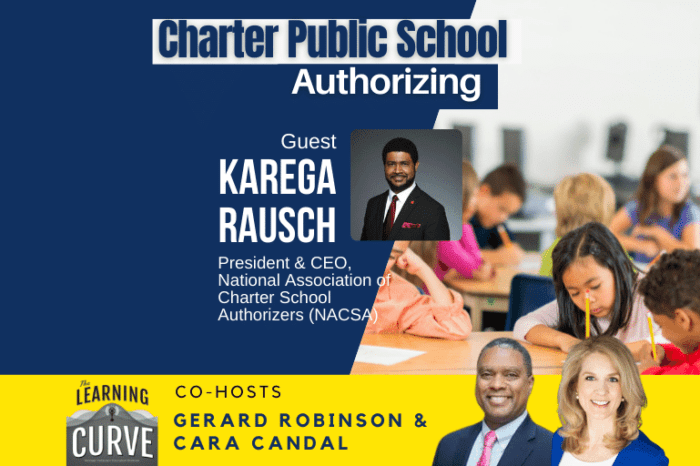NACSA’s Dr. Karega Rausch on Charter Public School Authorizing
/in Charter Schools, Featured, Podcast, School Choice /by Editorial StaffThis week on “The Learning Curve,” Cara Candal and Gerard Robinson talk with Dr. Karega Rausch, President and CEO of the National Association of Charter School Authorizers. Dr. Rausch shares some of his background, his interest in K-12 education reform and charter public schools, and lessons from Indiana and other states that inform his work. With charter public school enrollment nearly doubling to 3.4 million students in roughly 7,700 schools and campuses across America, he talks about the states that have experienced the largest growth and those that have lagged behind. They discuss the role that single and multiple charter authorizers play in charter school expansion and performance, academic quality, and diverse pedagogical approaches. They delve into the charter policy bargain of greater school autonomy in exchange for greater accountability, and how charters are held responsible for student performance. Dr. Rausch also challenges misguided criticisms of for-profit school management companies running charter public schools, and offers thoughts on how to rebuild wider political coalitions to support charters.
Stories of the Week: EdChoice celebrates and reflects on ten years of American public opinion surveys on education. For the first time since the enactment of the Individuals with Disabilities Education Act, Congress is about to fully fund K-12 special education programs.
Guest:
 Karega Rausch is the President and CEO of the National Association of Charter School Authorizers (NACSA), responsible for ensuring NACSA advances and strengthens the ideas and practices of authorizing so that students and communities, especially those who are historically under resourced, thrive. He has extensive charter school authorizing, education research and policy, community engagement, and strategic advocacy experience. Before being appointed CEO at NACSA, Karega headed NACSA’s research initiatives, was a former Education & Charter Schools Director with the Indianapolis Mayor’s Office, the Board Chair of the Indiana Charter Schools Board (Indiana’s statewide authorizer), the Director of the Indianapolis affiliate of Stand for Children, and on the leadership team of Indiana University’s Equity Project, housed at the Center for Evaluation and Education Policy. Karega earned his Ph.D. and master’s degree in educational psychology from Indiana University in Bloomington, Indiana, and a bachelor’s degree in psychology from DePauw University in Greencastle, Indiana.
Karega Rausch is the President and CEO of the National Association of Charter School Authorizers (NACSA), responsible for ensuring NACSA advances and strengthens the ideas and practices of authorizing so that students and communities, especially those who are historically under resourced, thrive. He has extensive charter school authorizing, education research and policy, community engagement, and strategic advocacy experience. Before being appointed CEO at NACSA, Karega headed NACSA’s research initiatives, was a former Education & Charter Schools Director with the Indianapolis Mayor’s Office, the Board Chair of the Indiana Charter Schools Board (Indiana’s statewide authorizer), the Director of the Indianapolis affiliate of Stand for Children, and on the leadership team of Indiana University’s Equity Project, housed at the Center for Evaluation and Education Policy. Karega earned his Ph.D. and master’s degree in educational psychology from Indiana University in Bloomington, Indiana, and a bachelor’s degree in psychology from DePauw University in Greencastle, Indiana.
The next episode will air on Weds., October 12th, with Jeff Wetzler, co-founder of Transcend Education, a nonprofit focused on innovation in school design.
Tweet of the Week
What is a statewide school district?
?? They are dedicated to designing bold new visions of public education.
?? They create space & flexibility for innovations to flourish—while safeguarding students and protecting the public interest.Learn more: https://t.co/0w0Bjn3nRS
— Center on Reinventing Public Education (@CRPE_edu) October 3, 2022
News Links:
Forbes: A Decade of Public Opinion on Education
Brookings – More Money Is Not Enough: The Case for Reconsidering Federal Special Education Funding Formulas
Get new episodes of The Learning Curve in your inbox!
Read a Transcript of This Episode
Please excuse typos.
[00:00:00] Cara: Listeners, welcome to another wonderful addition of the Learning Curve, a Fall edition of The Learning Curve. I’m here with my amazing co-host, The one the only, Mr. Gerard Robinson. Gerard, how are you doing today?
[00:00:38] GR: I’m a happy pumpkin today, given that it’s fall.
[00:00:41] Cara: You’re a happy pumpkin. So what is your favorite part of fall, and you’re not allowed to say pumpkin spice latte because they’re disgusting.
[00:00:49] What’s ? What’s your favorite’s? Something you look forward to?
[00:00:54] GR: The changing of the color of leaves on trees. And I say that because as a kid or a [00:01:00] young man growing up in Los Angeles, you know, we had trees. Yes, there were, they would fall and change. But the beauty of the foliage here in Virginia and the changing of colors and we’re in the mountains.
[00:01:10] I mean, I’ve seen it in Massachusetts as well, but just Virginia changing is just absolutely beautiful.
[00:01:20] Cara: Yeah, no, of course. I mean, that’s exactly a funny story I found myself I was walking down the street today with my five year old, and as you know, five year olds ask amazing questions and he was asking me amazing questions about why the leaves change colors and why they fall.
[00:01:38] And I found myself reaching into the far quarters of my brain and recognizing that I think I had a really terrible science education because I, my answers were fully inadequate, and so we had to come home and read about it and do some research. So, but yeah, I, couldn’t agree more. It’s a beautiful time of year, and I have to say for folks who don’t live in a place where you [00:02:00] get to see that my in-laws in Argentina this time of year are always asking, For us to send photos of the changing colors.
[00:02:06] So it’s a beautiful, it’s a beautiful time. I’m happy to be spending it with you Gerard. I know it’s getting quite crisp here in Massachusetts. We are definitely feeling the fall, so it’s lovely. It’s sweat a weather as they say on Saturday Night Live. So Gerard, What are you thinking about this week? We had just a, so many great stories of the week to choose from and I’d like to know what’s on your.
[00:02:31] GR: So, as you know, and some of our guests may know Ed Choice, which is headquartered in Indianapolis, formerly known as the Milton Friedman Foundation for the last decade. They’ve put out a survey of school choice, and I’ve had a chance a couple of times to actually participate in the official public release.
[00:02:50] Well, this is at the 10th. And Mike mc Shane, who is the director of Research and who’s a colleague of mine through the AAI Network wrote a really good [00:03:00] article about not only the survey itself, but he’s giving all of us five takeaways. Now, before I get to the five takeaways, I would tell all of our listeners go to Edge Choice get the survey and read it.
[00:03:11] And I mean, this is definitely one of the most thorough surveys you’re gonna find on educat. Public, private homeschool, traditional public school charter. And the great thing is they have a national representative sample. So this gives you an idea of what Americans are thinking. So of all the things that Mike looked at, his team looked at, Mike said here, five takeaways.
[00:03:31] Number one general opinion about education doesn’t change that much. So Mike is saying that, you know, when you look at what Americas were thinking, 2013 when they were asked the question, are we going in the right direction or the wrong direction? Well, in 20 13, 60 2% of Americas thought that the education system we have was going in the wrong direction, and 26% said we were headed in the right direction.
[00:03:56] Well, fast forward. And [00:04:00] 2022, it’s 61% say we’re on the wrong track. So really no change there. And 34% of course a little higher saying we’re going in the right direction. When you talk to families about schools, and you and I know this, we’ll say that our. School is doing well. Our school is excellent. Even if there’s some blemishes, we’ll talk about it, but overlook it.
[00:04:21] But we talk about the system, it’s usually all things going horribly accepted my school. So from a research perspective, guess what? At least 60% of the people are saying that we’re going in the wrong direction. And it’s worth noting that this is not post covid, but is removing or transitioning through the next phase of Covid.
[00:04:40] People said the same. In 2013, and we’ve gone through two presidential elections and a lot of social change. So that’s number one. Number two, Mike said opinions on school choice policies have changed. So if the direction of the country, in terms of going the wrong way is pretty consistent, there’s been big changes [00:05:00] in school choice, so, Between 2013 and 2016 when the public was asked to basically tell their level of support for choice, it was roughly 60 to 66%.
[00:05:11] Said that they liked it, but as you got toward 2016, it actually dropped. The numbers were 52 to 50 to 9%. Now, when you look at the peak of school choice in 20. things began to change. So when you look at the numbers now, 81% of Americans said they support education savings accounts. 74% say they support tuition tax credits.
[00:05:33] 73% say they support vouchers and 72% say they support charter schools. That number is grown. And when you do disaggregated by race and by political fe. Those numbers are just starting to increase now, I think in the year of 2020, on 2021 being two years where it was considered the year school choice for different reasons.
[00:05:55] Yes, the pandemic had played a role in changing people’s perspectives. But if you look [00:06:00] at this report and you also look at other studies, The public has been slowly but surely moving up. But again, if you just aggregate by data and party, it shows you some things that are interesting. Number three, people have no idea how much we spend on schools.
[00:06:14] And I know this because I recently had an opportunity to speak to a group of graduate students about education reform, and I. The same question. How much do you think we spend on schools? And they’ll say, Roughly 7,000 lost or heard was 5,000. Guess what? The median response from the general population was?
[00:06:33] $8,000 per student, and the median response for parents was 5,000. So even what I participated in recently was roughly the same number, even though the true numbers. On how much we spend range from $8,287 to a high of 25,273. And those numbers are in places like Newark, New Jersey, dc and some of our big cities.
[00:06:58] Number four, [00:07:00] most parents are happy with their child’s school, but a significant minority or dissatisfied parents. And guess what? They actually exist so. This is, I think you may find this interesting. We, this is not, we see, but the team saw that 69% of public school parents, 72% of charter school parents, 78% of private school parents, and 73% of homeschool parents are satisfied with their child’s education.
[00:07:26] So that’s pretty high. But then they went a step further and when they said, when you look at the fact that 31% of public school parents are either very or somewhat dissatisfied with their schools, when you look at the number that’s roughly north of 10 million, people aren’t satisfied with their school.
[00:07:46] So that’s a big number. We’ve gotta work with our public school’s doing some great things. Absolutely. Are there parents, school parents with children to public schools who are satisfies? Absolutely. But we can’t overlook the fact that north of 10 million parents are not, And fifth and [00:08:00] last take away is different parents want different things from schools.
[00:08:04] So when they ask traditional public school parents, what do you want? They prioritize proximity to home or. Academic quality and the fact that their child is assigned to our schools. Roughly 83% of public school students in the United States actually go to a school that they are assigned to or zoned for, For charter school parents.
[00:08:23] They prioritized academic quality, safety, structure and discipline, which tied with class size private school parents top. Academic quality, safety, and moral instruction. And last but not least, homeschooling parents. They led with safety one-on-one attention and academic quality. So academic quality is important to all families.
[00:08:45] So as safety and for private school parents, the moral instruction. So those are five takeaways. I’m pretty much in agreement with some of the things that Mike and his team identified I’m just always glad to see what regular. Or [00:09:00] outside the bubble of DC or outside the bubble of state capitals.
[00:09:03] I live in Virginia Source Richmond. But to see what the people think and to see what Cara thinks, what do you.
[00:09:11] Cara: Well, listen, I always appreciate this report from a choice, and the great thing about it is that they put out these reports, annually, so you can see trends and you can, we can, like you said, we can notice maybe the impacts of the pandemic, et cetera.
[00:09:23] The phenomenon that we see in, almost every study right there. There’s a couple things. Number one, it’s this phenomenon, as you mentioned of like, Oh, the system’s falling apart, but not my school. Everything’s fine. Nothing to see here. Part of me thinks that parents. And it’s just people in generally, it’s like you don’t know what you know until you know sort of a thing.
[00:09:41] Like you don’t see what I’m saying? It’s like, yeah, well okay, if my only option is my local public school, then of course I’m gonna like it. That must be fine. And then when, Until you have a problem, until, So it’s those parents that are somehow activated, Right? That are the ones that can look beyond and say, Well actually no.
[00:09:59] Maybe. [00:10:00] The other thing that’s always very interesting to me about these reports is that you ask parents, In the theoretical do you like the idea of every family getting the same amount the state would otherwise spend on their kids’ education and then parents being able to direct that money to the school or the educational experience that’s best?
[00:10:20] Yes. Right. I like it. But then you put it another way. So like, let’s flip that and if, asked in the way, for example, that opponents of expanding access. Teachers unions, , they just are, I’m not, I don’t say that to throw shade, it’s just they are the leading opponents of many of these choice programs would ask it in a different way.
[00:10:38] Right. Which is would you be in favor of these programs knowing that they might untrue, like drain money from the schools or, So for me it’s always about the, how the questions are asked. And I’m not saying that as a critique of the ed choice poll I’m saying is that again, it’s sort of. You don’t know what you know until you don’t know that you know it or, or whatever I said before, George.
[00:10:57] So I think that it’s a, fascinating [00:11:00] sort of exercise in this, and I often go to dinner table conversations that I have with my friends where I think that you can ask folks generally the same question, Would you be in favor of X? Well, of course I would. But then you call it by another name, like a voucher.
[00:11:13] And people are like, Well, that must be terrible because. Elizabeth Warren told me it was, or whatever the case is. Right. So it’s very interesting. And I think too, the one thing that I, I wish we could do a better job of with these reports, and again, not to say that Ed Choice isn’t doing a good job of it, just as a community in general, is that I think that they do a great job of sampling a broad swath of folks, and then the people that read the report are like you.
[00:11:41] And maybe now the listeners of the L Curve podcast. so that, I think that the problem is, is that we’re speaking to one another in , a bit of an echo chamber. And what we need in order to empower parents is to show parents like not only are these options, here are examples of how they work in certain places, and [00:12:00] also here’s what a majority of Americans really think.
[00:12:02] And just by the way, Saying that your four more accessibility, more choice, more options for all kids, should not be a knock against public schools in any way, shape or form. In many cases, your local public school is going to be the best choice for families. It’s just not gonna be the best choice for every family.
[00:12:20] And so, That’s something that I wish we could, I don’t know, Gerard, maybe we need to have like a learning curve roadshow or something where we go and, take research like this and bring it to the people because this is the kind of stuff of when I talk to my family about it at like, over the holidays, you know, their eyes glaze over and they’re like, Yeah, okay, here we go.
[00:12:39] Yeah, here we go again. Here we go again. She won’t be quiet. so I was thinking, my story of the week j. Is about a specific population of kids for whom choices have been opening up through choice programs. So, for example, so, I wanna talk to you about what I think is a great blog about, a really interesting study [00:13:00] published on the Brookings website.
[00:13:01] But it’s. funding for students with disabilities and other special educational needs. It’s about I D E A, the Individual Disabilities Education Act, and one of the reasons this peaked my interest so much was this article talks about research into sort of how IDA funds are distributed, but because we know that one of the populations that’s increasingly demanding more options and taking advantage of them, Our students with disabilities and students with special educational needs.
[00:13:28] And this is fascinating to me because most of the existing, for example, education scholarship accounts in this country are for students with disabilities. . Yeah. Except now Arizona. Cheers to Arizona. Wow. Big news. They just defeated an effort to stall what will. A universal education savings account, so the second authorized program, But Arizona was the first ESA in the nation, and it started out only as a program for students with special educational [00:14:00] needs.
[00:14:00] So they could take their state allocation, their per pupil funding, and direct it towards the services and educational experiences that those students need. And in many cases that. private school tuition for schools that, for example, specialized in a specific learning need, a school for children with autism, et cetera.
[00:14:18] But the reason this story really peaked my interest is because we wouldn’t even be having this conversation about how do you serve Neurodiverse kids, kids with lots of different needs. If it weren’t for. I D E A, the, as I said, the Individuals with Disabilities Education Act, and I was looking into this a little bit, Gerard, and , for our listeners, just a crash course.
[00:14:40] As I used to say to my graduate students when I was teaching at bu, it feels to me like pretty much everything we know about modern day funding for education. Really goes back to 1965 in my mind, , actually, you could go back further. You could go to 55, you could go to Brown v. Board of Education, which was the impetus for what would [00:15:00] become the eea, the Elementary and Secondary Education Act of 1965, which was in, for the most part, you know, with just a few like small exceptions for military personnel.
[00:15:10] Before that, the federal government’s first foray. Into giving money to public schools. And so E S C A, of course part of President Johnson’s War on Poverty originally was directing funding. Still does to this day to schools with high concentrations of students in poverty. But that came on the heels of, Trying to desegregate the country schools among many other things.
[00:15:33] Now, what does this have to do with students with disabilities? Well, once you start to see that the federal government might have a role to play in helping states to ensure that kids are getting a, I don’t even wanna say equal, because that’s not the thing, and equitable isn’t either, but the federal government is putting in some share.
[00:15:53] Hopefully in a way that incentivizes states to put even more skin in the game in order to ensure that kids who need more [00:16:00] get more, which is really supposed to be the idea here, but understanding from Brown V Board and the Coleman report, which we’ve talked about on this show before, that certain populations of kids are gonna be more expensive to educate, not more difficult to educate.
[00:16:14] They have different needs, and they oftentimes need more resources. And among those are, , with disabilities, and that can be a wide range of things. So although E S C A. Didn’t directly address this population on the heels of E S C came several court cases in Pennsylvania and Washington, DC for example, where they basically said, actually we, the public, the public school system must be responsible for educating all kids, including those with disabilities.
[00:16:45] And so this, it’s not until the seventies, Gerard and I. I knew this but hadn’t really thought about it, that we understood how many children in this country either had specific learning needs that weren’t being met or had specific learning needs that weren’t being [00:17:00] met well in our schools. So in 1972, on the heels of these court cases, I mentioned Congress actually investigates just how many kids in this country have special educational needs.
[00:17:11] At the time, they found it was 8 million. That number is much higher today. But of those. They found that 2.5 million kids were receiving what they called a substandard education in the nation’s public schools, and a full 1.75 million of those children were not even in schools because either they thought they couldn’t be served or the schools were outright saying.
[00:17:32] They can’t be served. So it’s in 1975 that President Ford, he signs what would become, At the time it was known as the Education for All Handicapped Children’s Act. That’s antiquated speech at this time. Right. But would become in the nineties, the Individuals with Disabilities Education Act. Right. And what that did at the time was it said if schools receive.
[00:17:56] Federal funding if states districts receive federal funding, and of [00:18:00] course they all did at the time because of E S E A, then they are responsible for making sure that all students, including those with disabilities, have access to a public education. And so the rest is sort of, as they say, history. Congress has tweaked around the edges of this program for a long time now.
[00:18:19] To the article. I think that many of us just think, Okay, kids get these funds and if you have certain needs, then the district should give you more. They should wait the funding. And you also get this special federal funding to meet your needs. What we often overlook is the how, it’s the how that money gets distributed to districts, how gets distributed to states.
[00:18:38] And that’s exactly what this wonderful new study is about. It’s by Tammy Cole, Elizabeth Dewey, and Sarah Menlo Dure, and I’m sorry, I probably. Totally butchered her name, but there’s a summary of the study published on the Brookings website and it’s entitled, More Money Is Not Enough, The Case for Reconsidering Federal Special Education Funding Formula.
[00:18:56] So, just a couple things here that I learned, Gerard, and as you [00:19:00] know, I’ve been studying education for. Longer than I care to admit. , and here are a couple things that I learned. Of course, I knew that Congress had to appropriate money for I d a annually, and what I never knew was that Congress could authorize up to 40% of.
[00:19:16] What would be per pupil spending in a state to go towards, like they could top off the education of students, students with these special needs. And they’ve never even come close to meeting that fresh hold. So they’ve really been underfunding the program for quite a long time. for fiscal year 2023, this Congress did approve a 20% increase in appropriations for ida.
[00:19:36] And that’s a. Signal that means that they’re getting ready to do something. And I think a lot of that is coming on the heels of the pandemic, where we know students, especially those with severe disabilities suffered the most, really did not have the access that is their due under federal law. But what this article points out more importantly is that it’s not enough to just say, We’re gonna give more money to this.
[00:19:59] We need to [00:20:00] think. How the money is distributed. And of course, it should succumb as a surprise to no one, that it is a complex bureaucratic formula that funds Ida and they most recently redid it in the nineties, I think it was 1997. And the result, the end result is this. And I know this is gonna shock everybody, it’s woefully unequal how this money gets distributed to states.
[00:20:22] So here’s just one example that they give. They say, if you look at for example, the difference between funding for kids in Wyoming and Nevada, a student who qualifies for IDA funding. Would get 2,826 extra dollars if they live in Wyoming. If they live in Nevada, it would only be 1,384 extra dollars.
[00:20:42] That is a big difference. So that’s 34% of per pupil in one place and 11% in the other. And you know, what’s to say that a child in Wyoming should somehow be worth more funding than a child in Nevada? Absolutely not. And then if you dig down more deeply into this, [00:21:00] what really happens, as we’ve known for a long time, always happened.
[00:21:03] E S E A with title. And what happens is that the more students you have in a state with special educational needs, the thinner the funding is spread. So what does that mean? It means if you live in a more densely populated area if you live in, in if, and children of color tend to live in more densely populated areas in this country, all of these things factor in to making sure that you will actually get less federal money from i d a than you would if you lived in a place that was less populous.
[00:21:33] Less concentrated need, and this all goes back to. As I said, an antiquated formula that these researchers are telling Congress, if you really wanna make a difference, what you need to do is ensure that everybody is getting an equal slice of the pie. So I found this fascinating. It caused me to think a little bit more about the history of ide, and it also caused me to think about one thing that I think relates very well to your story and [00:22:00] that is this, Gerard, that even as we open up more choices, For students with a variety of different needs in this country for most especially students with disabilities, the public school system is going to remain the place that they go.
[00:22:13] And there are a couple reasons for that. I think one of them is scale. A lot of private schools will be very transparent that they don’t have the ability unless they. Specialize in a certain population that they don’t have the ability to serve students with special educational needs in the same way that a district that has larger concentrations of those students would.
[00:22:30] And so what that means is that parents are often left with very few options. If their child has a very specific need, they might not have the same options, especially if they’re in a state where they don’t have choice and they’re not attracting those providers that might specialize in serving students with specific needs.
[00:22:48] So it seems to me that. piece of research in this article is really imperative for changing the game in terms of how we serve all kids and make sure they all have access, especially those who are [00:23:00] more or less locked into attending the public system. So I said a lot, Gerard, and I know we’ve got a guest to bring in, but just in one or two minutes, I know you think a lot about these issues and that you serve on a board where you think a lot about these issues.
[00:23:13] Do you have a, thought, a brief thought for us?
[00:23:16] GR: I think you did. A magnificent job of summarizing the history talking about the research in politics. So, kudos to you there. I think about a conversation that you and I had with Jennifer Mizani when she’s the former founder and president of Respectability.
[00:23:32] And I’m on the board, as you mentioned. And you know, our job is to help advocate and represent 57 million adults who have a disability, but also roughly 10 million children as well. If governors, and we’ve got 33 gubernatorial elections that will take place this November. here’s one area where you don’t hear governors talk a lot about the subject, but I know for a fact that Jennifer, when she was in her office, met one on one with 48 governors.
[00:23:58] Some of them were in [00:24:00] office, some of them were running to become governor. But what we decided to do was to say, Listen, even though it’s federal money, we know education’s a state issue. So I would. To sitting governors and to those who may wanna replace the governor. This is one area where you can make, put a nice flag in the ground and say that if you really want to help all students, and we say all students, but for a host of reasons, we forget about this population.
[00:24:24] And I think what you provided to our listeners is something that governors and wanna be, governors could take a look at. So, great. ,
[00:24:32] Cara: Thank you. I love getting kudos from Gerard. That’s a big, that’s a great compliment. Gerard coming up and they
[00:24:38] GR: often don’t come the other way. So this is also for you to,
[00:24:44] Cara: I did introduce you as like my favorite cohost, right?
[00:24:47] That, Did I say that? Okay.
[00:24:50] GR: Ard, I just, I’m the only but by default, but I got it. I, I’ll take it as a, as a nice thing. Ha.
[00:24:56] Cara: No win. Ladies and gentlemen. No win. I’m [00:25:00] gonna do a hard pivot here. Coming up, we’ve got waiting for us. We’re gonna be speaking with Karega Rausch, the president and CEO of the National Association of Charter School Authorizers.
[00:25:09] You know, we love to talk some charter schools on this show, so we will be bringing him in in just a moment right after this.[00:26:00]
[00:26:30] Learning curve listeners, we are excited to welcome Dr. Karega Rausch. He’s the president and CEO of the National Association of Charter School Authorizers known to some of us as NACSA. He’s responsible for ensuring NACSA advances and strengthens the ideas and practices of authorizing so that students and communities, especially those who are historically under resource.
[00:26:51] Thrives. He has extensive charter school authorizing education, research and policy, community engagement and strategic advocacy [00:27:00] experience before being appointed CEO at NACSA. Karega headed NACSA’s Research Initiatives was a former education and charter school’s director with the Indianapolis Mayor’s Office.
[00:27:09] And the board chair of the Indiana Charter Schools Board, it’s Indiana’s statewide charter authorizer. He was also the director of the Indianapolis affiliate of Stand For Children and on the leadership team of Indiana University’s equity project housed at the Center for Evaluation and Education Policy.
[00:27:26] Go Hoosiers. Karega earned his PhD and Master’s degree in Educational Psychology from Indiana. University in Bloomington, Indiana, and a bachelor’s degree in psychology from DePaul University in Green Castle. I do love the Hoosier State. It has been way too long. Karega Rausch, welcome to The Learning Curve.
[00:27:44] Karega: Oh, it is definitely an honor and pleasure to be with you all today.
[00:27:48] Thank you for having me.
[00:27:49] Cara: Yeah, we’re excited to have you, as I’m sure I don’t have to tell you and I think a lot, about, we talk a lot about, we have a lot of great feelings about charter schools and we love to use [00:28:00] The Learning Curve as a venue to elevate the work. So I can’t think of a better guest to help us do that.
[00:28:06] So You lead a national organization. You’ve also got deep policy roots in Indiana. I told you at the outset I too, I grew up in the Detroit area, but I am a Hoosier in terms of my undergraduate education. Talk to me a little bit about, talk to us, I should say, a little bit about your background, how you got into education at all, and then what led you to charter.
[00:28:28] Karega: appreciate the question. It’s fascinating. short story. So, after teaching in my old high school for a couple of years I went back to graduate school with the real focus on learning and changing why there were so many students of color that were in special education or being removed via suspension and expulsion.
[00:28:47] That was my kind of introduction to try. Figure out how schools can work better for all kids. I will tell you during that time, which was primarily with our friends in the district run kind of public school sector, that I [00:29:00] learned about the extraordinary bureaucracy in really talented school leaders that were trying to make change but getting blocked.
[00:29:06] Over and over and over again. Even small things like a teacher that wanted to collect some additional data on their classroom management, had to get approval from three different layers of bureaucracy to make even small changes. And, you know, felt like we were hitting our head up against a wall, trying to figure out how we can make schools work in ways that were not constrained by inappropriate, bureaucratic systems.
[00:29:30] And around that same time, two important things happened that really shaped my work in charter schools and through, in different venues of education reform. One was I learned of a close friend of mine that was starting this thing called the charter school that I had never heard of before, that was designed to prepare students that were largely forgotten and in a tough neighborhood for select college.
[00:29:50] Right, Ivy League prestigious colleges. And I had no idea that it was possible to start a new school. And was really intrigued. You know, a friend of mine kind of saying, [00:30:00] Hey, I’m gonna start this new school. I didn’t know that was even possible. And, the things come to fruition and doing amazing things for kids and families.
[00:30:06] And then on the second point, right around that same time, I got a call. From then the mayor of Indianapolis who by the way was a democrat who was looking for someone to help lead his charter authorizing. And when the mayor calls you don’t say no to that kind of a conversation.
[00:30:20] So I went and met with Mayor Peterson and was able to do some really good work there. And importantly was able to stay on through the end of not only his administration, but also through a significant chunk of the next mayor of Indianapolis, Mayor Greg Ballard, who was a republican. Which, was really important to demonstrate that the work of creating more grade schools for kids doesn’t have to be as partisan as oftentimes it is portrayed to be.
[00:30:45] And if there’s anything important that I learned about Indiana and Indianapolis that relationships. a lot of people were able to get a lot of things done during my time doing work there as well as in subsequent years in [00:31:00] policy and in practice because the relationships that were cultivated over a number of years, I mean, we had folks in coalitions that were really primarily interested in district level change.
[00:31:09] To folks really interested in pursuing charter school kinds of changes, even those that were more so interested in private school choice you know, kinds of options, everything in between. But because we were able to forge relationships over a number of years those coalitions really aligned the.
[00:31:24] Because we spent that time building trust. And so, I think that’s a secret sauce in my opinion, right around how we can still get important things done. It’s through the quality of relationships built over a long period of time. So I said a lot there just around kind of my background and some lessons from Indiana, Indianapolis that have kind of shaped how I think about the work and the things that we have going.
[00:31:44] Cara: No, but that’s amazing and I appreciate you highlighting Indiana because truly it is a state with just myriad options for kids. it’s really a lot of innovative stuff going on / , in that Midwestern state. And thank you for underscoring that. Charter schools [00:32:00] can indeed be a bipartisan.
[00:32:02] Effort. I think that the politicization of charter schools has really become more profound in the past decade. And there was a time when it wouldn’t surprise anybody to, to hear that a Democrat would support charter schools or that a Democrat and a Republican could. let’s talk about a little bit about your work in authorizing.
[00:32:20] So we’re gonna talk about trends in a moment. Over the last decade, , charter school enrollment, public charter schools, I, we need to call them that. I think because so many people still have the misconception that these schools are not public, but it, it’s nearly doubled. I mean, I can remember the days when I was first studying charter schools in my own doctoral work and we were talking about a million students, and now we’re at 3.4 million in charter schools, and that’s about 7,700 schools and campuses around the country.
[00:32:49] So we know that some states. Have a lot of charter schools, others, not many. Some have in fact only got one or two new charter school laws. [00:33:00] Can you talk about the states that are seeing the most meaningful growth, and also help our listeners understand the very important role that authorizing plays in expanding high quality charter school?
[00:33:12] Karega: So it is pretty remarkable that right now we stand where there are only five states that don’t have a charter law on the books which is uh, pretty remarkable when you think about it wasn’t that long ago where this idea of any kind of a charter school didn’t even exist any place.
[00:33:27] It’s also noteworthy that in five other states Texas, Florida, Arizona, California and New York. They account for more than half of all charter school enrollment across the country. Arizona is the state with the largest share of charter school enrollment relative to its overall population and Nevada and Oklahoma um, in a couple of states that have seen a lot of growth in the past few years.
[00:33:51] I’m also really glad you asked the question about authorizing. Because, , authorizing are the policies and practices that decide who can open new charter schools, how [00:34:00] they’re overseen, what standards they have to achieve and who’s able to continue serving students and families. And good authorizing balances.
[00:34:07] The three most important core tenants, some of charter schooling, and that’s ensuring families have equitable access. That educators have the autonomy they need to create and succeed, and that schools are held accountable for the outcomes that they promised to get kids and families. And so across the country, we see that there are just under about a thousand authorizers in the country around six different types of institutions that are allowed to authorize public school districts state education agencies, higher education institutions.
[00:34:39] couple of states allow for nonprofit organizations and independent charter boards along with mayor’s offices or municipalities. And so when that balance of access and autonomy and accountability is done really well, we definitely see growth in high quality learning opportunities.
[00:34:57] Unfortunately when it’s not done [00:35:00] well we also see how authorizing can also stifle innovation. And in some instances, especially spaces where there are only one type of authorizer that may have some conflicts, some of interest they can be hostile. To the very notion of charter schooling.
[00:35:14] So when we think about kind of growing high quality school, it’s really important to have authorizers that can get that balance well, and right around access, accountability, and autonomy. And that they haven’t. Interest in growing high quality schools and we see those combinations in addition to some other important policy implications.
[00:35:34] That’s where we see not only growth, but high quality growth because students and families are absolutely interested in more choices. They are very much interested in making sure those choices meet their individualized and unique needs cuz kids aren’t widgets. I’m a proud dad of a 16 and a 14 year old.
[00:35:51] And they are very similar and very different. It’s really important that we design schools that can meet them, the very unique needs and the very [00:36:00] incredible aspirations and talents that all kids bring to the.
[00:36:03] Cara: Thank you for that. I have to just real quick personal anecdote here. As a former charter school board chair here in Massachusetts, where I think we have a pretty sound authorizing process, but I myself have written that we need more authorizers.
[00:36:17] we have one and it is this. The State Board of Education through the Department of Education. But the inside view I got as a board chair of the authorizing process here and how comprehensive it was and the kind of evaluations to which our schools were, were subjected that were Supportive when they needed to be, but really, truly, I think held, the board and held the schools accountable for serving students in the way that we promised in our charter.
[00:36:42] it gave me faith in the process. So, I know you can’t say, I know you, probably not every former board chair would say that. But I will say that, so it’s an important function. I wanna talk about sort of the elephant in the room. I wanna ask you about that. And that is even though we’ve seen growth in charter schools, and I think that charter schools, like many [00:37:00] private schools, saw some growth during the pandemic when as we know.
[00:37:03] Public school enrollment generally is going down in some places. But that is that, you know, to the bipartisanship that , you alluded to earlier in your career when you could work for both a Democrat and a Republican mayor, both of whom supported charters. That kind of support seems to be. harder to find these days.
[00:37:24] I need only to point to a recent attempt by the Biden administration to promote regulations that actually after lots of complaints, I think from parents and others where they rolled back. But, that would’ve really hampered the growth of some, high quality charter schools, especially in places where, where charters were in high demand or are in high demand.
[00:37:43] So can you talk about these sort of political. Shifts that we’re seeing. I mean, like I said before, I can remember a time President Obama was a huge supporter of charter schools. And we’ve also had Republican presidents. President Bush was a huge support of charter schools as well. We don’t seem to be in that [00:38:00] space anymore.
[00:38:00] what is going on and what do we need to do to rebuild? .
[00:38:03] Karega: It’s a fantastic question. I think we do see some differences in political support depending on kind of what level politics we’re engaged in. I think definitely additional polarization you know, in some instances at the federal level.
[00:38:18] I think when you look at The state level there political, I think support and opposition, it’s really context dependent and not necessarily widespread. And I think it’s, good that there still remains strong bipartisan support. Even, if there are some freeing, you know, along the edges, but where there are political.
[00:38:38] Unfortunately, it’s really policy makers that aren’t listening to their constituents. charters continue to enjoy broad and strong support among parents and families, especially among black and lower income parents. And so it so yeah, there it does seem like there’s some increased political polarization and kind of rhetoric around of chartering.
[00:38:59] [00:39:00] I think when you start to get to state and local, the issues are much more nuanced and not as clear cut and very context dependent around the kinds of learning opportunities that kids and families are looking for and people responding. But what is not up for debate is.
[00:39:18] Parents are absolutely looking for strong, high quality educational options and opportunities, and it will behoove any policy bigger at any level to listen well to what their constituents are asking them for.
[00:39:31] GR: I wanna follow up in the theme of bipartisanship, but really scale down to perception and you’re talking about nuance.
[00:39:39] So in the last two academic semesters, I had an opportunity to have a uh, a conversation about charter schools with students at two public universities with really bright students. And when I raised the question, What percentage of charter schools are managed by for-profit companies or emos? It’s [00:40:00] usually 30 to 50% across the board.
[00:40:02] And when they find out it’s much lower, they’re actually shocked because within education, w large, the whole idea that because something is supported run by private company means it must be evil or they’re out to run the system. So we’ve got, you know, you could tell us, you know, the number of. Companies who are involved, but at every level of education, even in the traditional system, we have for profit, profit companies, from school construction, to computer technology, software, textbook, even food services.
[00:40:31] Why is it a big issue when it comes to for profit management companies managing charter schools? Is that something you see, particularly the charter schools or something that’s broader about the conversation of public versus private? ,
[00:40:45] Karega: fantastic question. The, and I’m glad we’re having a conversation about this cuz there is so much misperception and misinformation out there around how charter schools are organized and how they go about doing their work.
[00:40:58] So I think first it’s really [00:41:00] important for listeners to understand that each charter school has what’s called a, a charter, which is a legally binding document between a state approved authorizer. The nonprofit board of directors, that nonprofit board of directors then has the autonomy to figure out how it wants to run the school.
[00:41:18] Sometimes it may hire a school leader and staff directly. Other times it may contract out with another nonprofit or a for-profit provider. So, you know, uh, Operate parts or all of the school. And that’s not even including all the different kind of vending services that it may use, non-profit or for-profit, providers for.
[00:41:36] So what most people refer to when they say for-profit charter schools is actually a non-profit board of community citizens that are contracting with a for-profit entity to run, some parts of the. A couple of other, I think really important points here. Cause again, a lot of misperception out there.
[00:41:52] There are actually very few of those kind of schools, as you indicated, Gerard in your conversations with some folks around the proportion [00:42:00] of schools, charter schools that are in this space. Very small number less than 10% ish or so. It’s also, they’re also very concentrated in just four states, and that’s Ohio and Florida, Arizona, and North Carolina.
[00:42:14] And so, we do think at an accident personally that we’re talking about for-profit providers it is very important that when a nonprofit board elects the contract with a for profit provider or any provider for that matter, that there be transparency in how the public dollars are spent that the nonprofit board retains full control.
[00:42:32] Over school funding. And, you know, if necessary can, fire the contractor for subpar performance. And that what the board is paying the contractor for is clear and available right for the public to understand. But once we have transparency and good governance provisions in place, the question about the contractor’s tax status isn’t the most important.
[00:42:52] The most important question has got to always be how are the students doing and are they getting the [00:43:00] outcomes that we as a, a collective society and parents are looking for them to get? The questions we should be asking are if the school has high rates of literacy and numeracy and. Other outcomes.
[00:43:11] And if the taxpayer dollars are being spent wisely under the control and nonprofit board and with transparency, and if the answer is no, irrespective of the tax status of the contractor, that school shouldn’t allow to be continued to pillar to serving students. But if they are serving students really well in taxpayer dollars are being spent transparently and wisely.
[00:43:29] The ultimate goal here are highly educated kids prepared for whatever future they wanna choose for. That has to be our North star in this.
[00:43:37] GR: Great response. You talked earlier about authorizers and you’ve had a chance to even sit in the position of being an authorizer, when we discussed the role of a single
[00:43:47] authorizer versus multiple authorizers and what roles they play in states. And I gotta say that even when you were doing your role at NASA as a researcher, now as ceo, you’ve actually kept a very strong [00:44:00] trajectory as related to best practices and best quality. And it’s something we often overlook. And you’ve even done, you know, great reports in terms.
[00:44:09] What do we find out from single versus multiple authorizers in states? So when you think about this from your perspective what role does state charter policy making play as it relates to authorizers and academic quality, authorizers, diversity of pedagogical approaches, and are there some states that are doing better jobs
[00:44:30] Karega: Yeah. Another outstanding question. this is a delightful conversation. I’m really enjoying it. this question right around authorizing and kind number of authorized in quality really matters. Because while the quality of authorizing is more important than the quantity, the number of authorizers in a given jurisdiction or state, it does matter.
[00:44:51] And that’s because the presence of multiple authorizers can strengthen a . State’s charter school sector, having a diversity of authorizers can promote professional [00:45:00] practices. It can provide some important checks and balances in things like charter approval and oversight and renewal decisions.
[00:45:06] It can also blunt political changes. Some of the things we were talking about before. If you are a part of an entity that engages that has been open. To charter growth and high quality charters, but then political wins kind of change and perhaps the board of the authorizer changes or something else kind of happens and that they shift to really being not interested in providing more opportunities for kids and families.
[00:45:30] Having multiple authorizers can still provide a pathway towards high quality authorization, and that’s why Xa for a long period of time has absolutely advocated. For each applicant to have access to more than one authorizer. Now, it’s also important to point out that at the same time, too many authorizers can dilute the overall quality of the charter sector, and that can create a race to the bottom.
[00:45:52] Where you may have schools that are just seeking the easiest pathway to entry or switching authorizers to avoid consequences because they failed kids. [00:46:00] And that’s why we’ve also recently seen state policy in places like Ohio and Missouri and Minnesota. Take a stand to reduce the number of unwilling or unprepared, or frankly just crappy authorizers that don’t have the capacity to do the work well.
[00:46:14] And so that’s why it’s really important to get the balance right, and align with what students and states need. And the states that tend to do the best job of authorizing high performing schools also tend to have pretty robust evaluation systems. And they also tend to have then a wider diversity of kind of schools available for folks.
[00:46:33] So when it comes to multiple authorizers, yes, it’s important that we think about this maybe through a lens of Goldilocks, right? Not too many. Not too few. We needed. Just right. So that we create the conditions for additional high quality and diverse schools to grow and, and thrive and flourish.
[00:46:51] GR: I think you’re the first guest we’ve had to bring in Goldlock. So again, this is the learning curve. We always get a [00:47:00] chance to expand on how we think about this. And I remember when I was a senior fellow at the Institute for the Transformation of Learning founded by Dr.
[00:47:08] Fuller, where Milwaukee had
[00:47:10] Karega: four authorizers.
[00:47:10] GR: Even though the fourth one being the community college did not involve itself in authorizing, the city, the school board and the University of Wisconsin Milwaukee, each offered something different to a potential charter group. And it was interesting to see how.
[00:47:28] Potential applicants negotiated the pros and the cons and the what ifs by having multiple authorizers. I’ve had a chance to see that firsthand. Here’s the last question for you, and it’s one, and I’m sure you’ve heard a lot. So we know that one of the fundamental bargains that the charter school community made policy makers is that if you give us greater autonomy, That we’ll do this in exchange for, , greater results, greater accountability.
[00:47:54] And so one area where charter critics have come and often claim is they say they listen. We’ve given you [00:48:00] more autonomy. We’ve also asked for more accountability, and that when we look at charter school performance, it’s only slightly better than what you find with students in traditional schools. How do you respond to the claims?
[00:48:15] About this and what can charters and the supporters do to talk about holding charter schools accountable for student
[00:48:22] Karega: performance? I’m really glad that you raised that question, and it’s really important that we live in the world of facts because it’s just factually not true that charter schools are only a little bit better than other schools that students could have access to.
[00:48:40] We know from high quality evidence and research across the country that most charters especially in urban area, Far outperform other public schools, particularly when you look at comparable student growth data. We also know that charter schools do really well with some lower income kids and especially African [00:49:00] American and black students.
[00:49:01] We see in some places where there are growing number of charter schools that are competing with some of the highest achieving non-urban and suburban schools in their state. So it’s just factually. True. When you look at some comparable data that charters are not outperforming, they are, and in many instances, far outperforming is also just factually not true, that charter schools are not being held accountable.
[00:49:26] As a matter of fact, charter schools are being held doubly accountable by parents. And by authorizers an important fact in the, five ish years or so before the pandemic hit more than a thousand failing charter schools had closed their doors. Let me repeat that. In about the five years before the pandemic, more than a thousand failing charter schools closed their doors to kids, that is accountability in action.
[00:49:53] Now it’s also true that we got some more work. To create the next set of schools that can meet new demands and needs. [00:50:00] If there’s anything that the pandemic has shown us has been the need to double down on schools that can accelerate student learning and think differently about how we can create new kinds of learning entities and opportunities that can demonst.
[00:50:16] What’s possible in not only accelerating student learning and wellness but the next set of schools that families are looking for. And that’s gonna require us to think a little bit differently about school quality about how we think about entry into the charter market. How we think about smart oversight in a way that can maximize teaching and learning rather than responding to too many bureaucratic kind of compliance requests, and ideas.
[00:50:39] As. So, I think very long-winded way of answering your question but I’ll just reiterate one, it’s just factually not true, especially in urban areas and amongst most kids of color that charter’s only doing a little bit better. They are far surpassing other schools. It’s also just false.
[00:50:55] The charters aren’t being held accountable when you look at more than a thousand charter schools closing failing [00:51:00] charter schools closing. And it’s also true that we got some work to. To create the next set of schools that can meet new demands and, and needs and communities. Well
[00:51:10] Cara: busting charter school myths beginning to end.
[00:51:12] I love it. It’s really good stuff. Karega Rausch, thank you so much for taking the time to join us today. I, know that the learning curve audience is really gonna appreciate this conversation.
[00:51:22] Karega: The pleasure was mine. Great to talk to you all. And thank you for the opportunity to talk a little bit about some stuff that we care deeply about great options for kids.
[00:51:31] Cara: Absolutely. We can all agree on that. Thanks so much. You take care. Thank you.
[00:52:19] Cara: Gerard, after that great conversation. We as always are gonna close it out with a tweet of the week, this one from our friends at the Center on Reinventing Public Education, otherwise known as spi and the tweet. Is a link to a new report and it’s statewide districts a way to unleash creative learning options and study them as they grow.
[00:52:42] I highly recommend that statewide districts are something that, we see. I mean, I think Hawaii most famously is one school district, right? But the argument here is that this kind of innovative option could provide better infrastructure for kids, but, and families, school districts shared research.
[00:52:58] and more access to [00:53:00] diverse learning options for kids. So it’s an idea that I think has some legs and I think everybody should be on the lookout. Gerard, next week we are gonna be speaking with Jeff Wetzler, co-founder of Transcend Education. And until then, I don’t know about you, but I’m looking forward to like maybe some apple picking, some apple pie, apple cobbler, all of the things.
[00:53:23] Apples, no pumpkin spice lattes because as I said at the out outside, I just the smell of a pumpkins spice latte is enough to send me over the edge. Makes me about, But Gerard, I hope that you enjoy this beautiful time of year and get outside and enjoy those leaves.
[00:53:37] GR: Will do.
[00:53:38] Cara: Bye bye.[00:54:00]
Recent Episodes
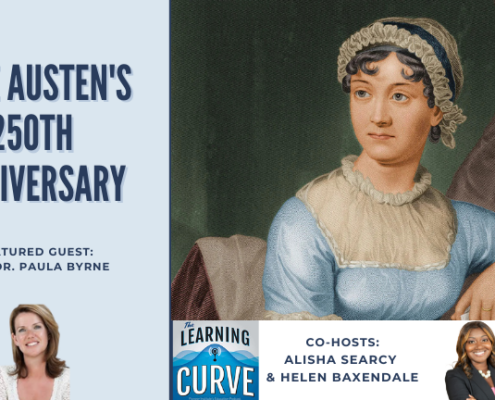
UK’s Dr. Paula Byrne on Jane Austen’s 250th Anniversary
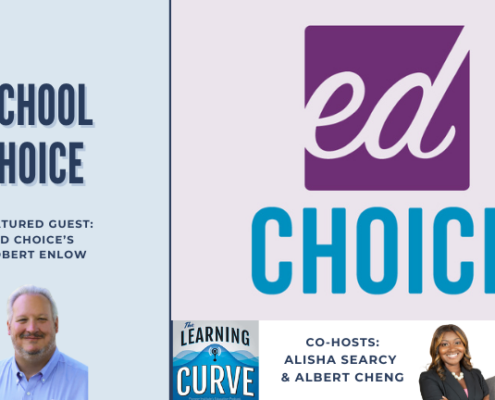
EdChoice’s Robert Enlow on School Choice
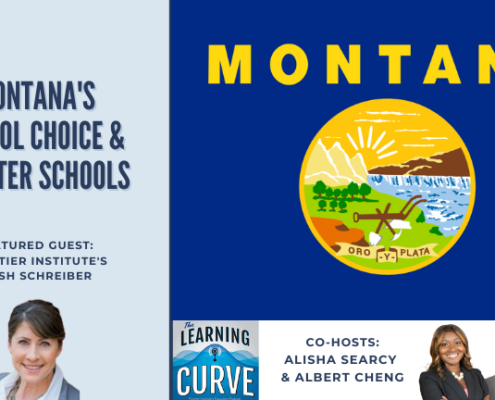
Frontier Institute’s Trish Schreiber on School Choice & Charter Schools in Montana

UK Oxford’s Robin Lane Fox on Homer & The Iliad
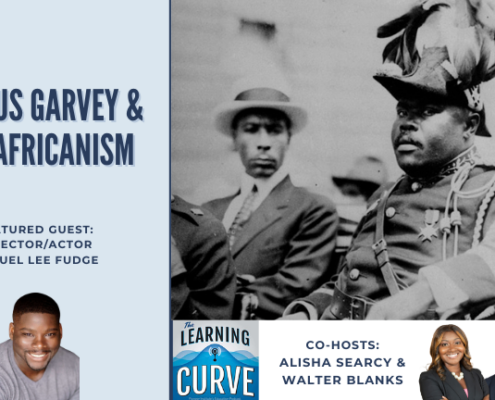
Director/Actor Samuel Lee Fudge on Marcus Garvey & Pan-Africanism
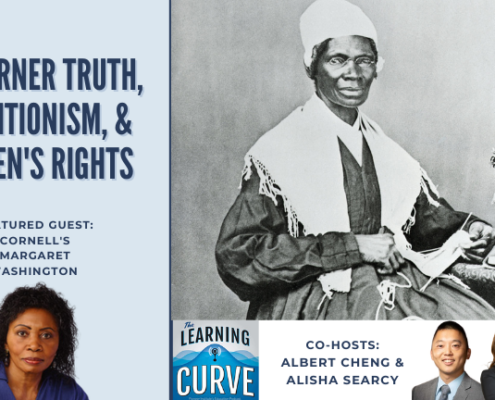
Cornell’s Margaret Washington on Sojourner Truth, Abolitionism, & Women’s Rights
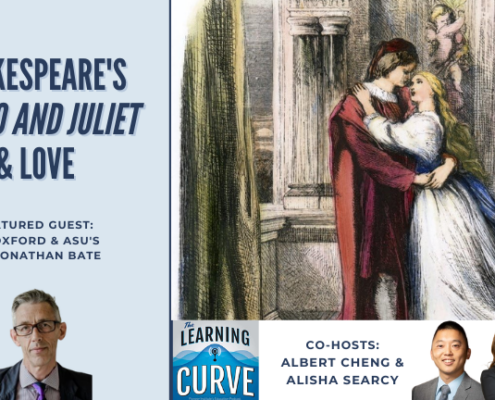
UK Oxford & ASU’s Sir Jonathan Bate on Shakespeare’s Romeo and Juliet & Love
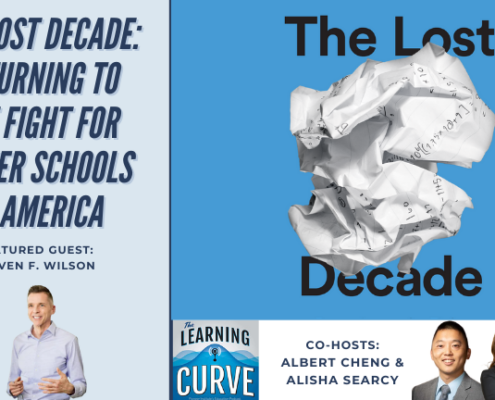
Steven Wilson on The Lost Decade: Returning to the Fight for Better Schools in America
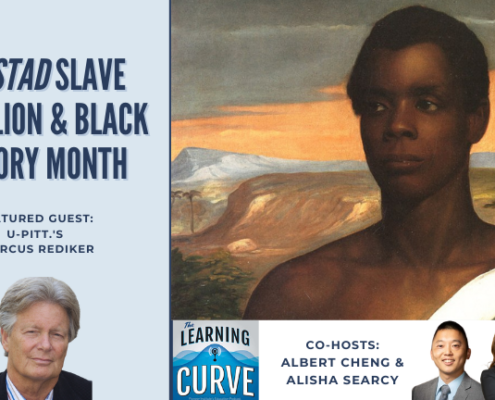
U-Pitt.’s Marcus Rediker on Amistad Slave Rebellion & Black History Month
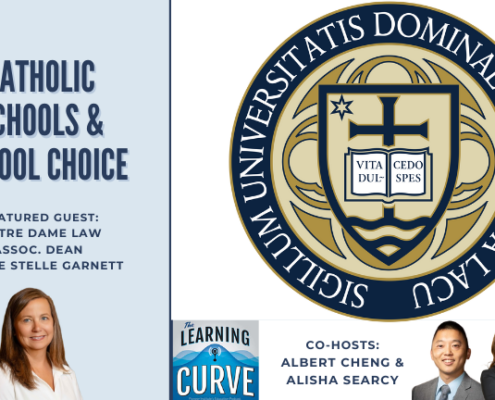
Notre Dame Law Assoc. Dean Nicole Stelle Garnett on Catholic Schools & School Choice

Alexandra Popoff on Vasily Grossman & Holocaust Remembrance
